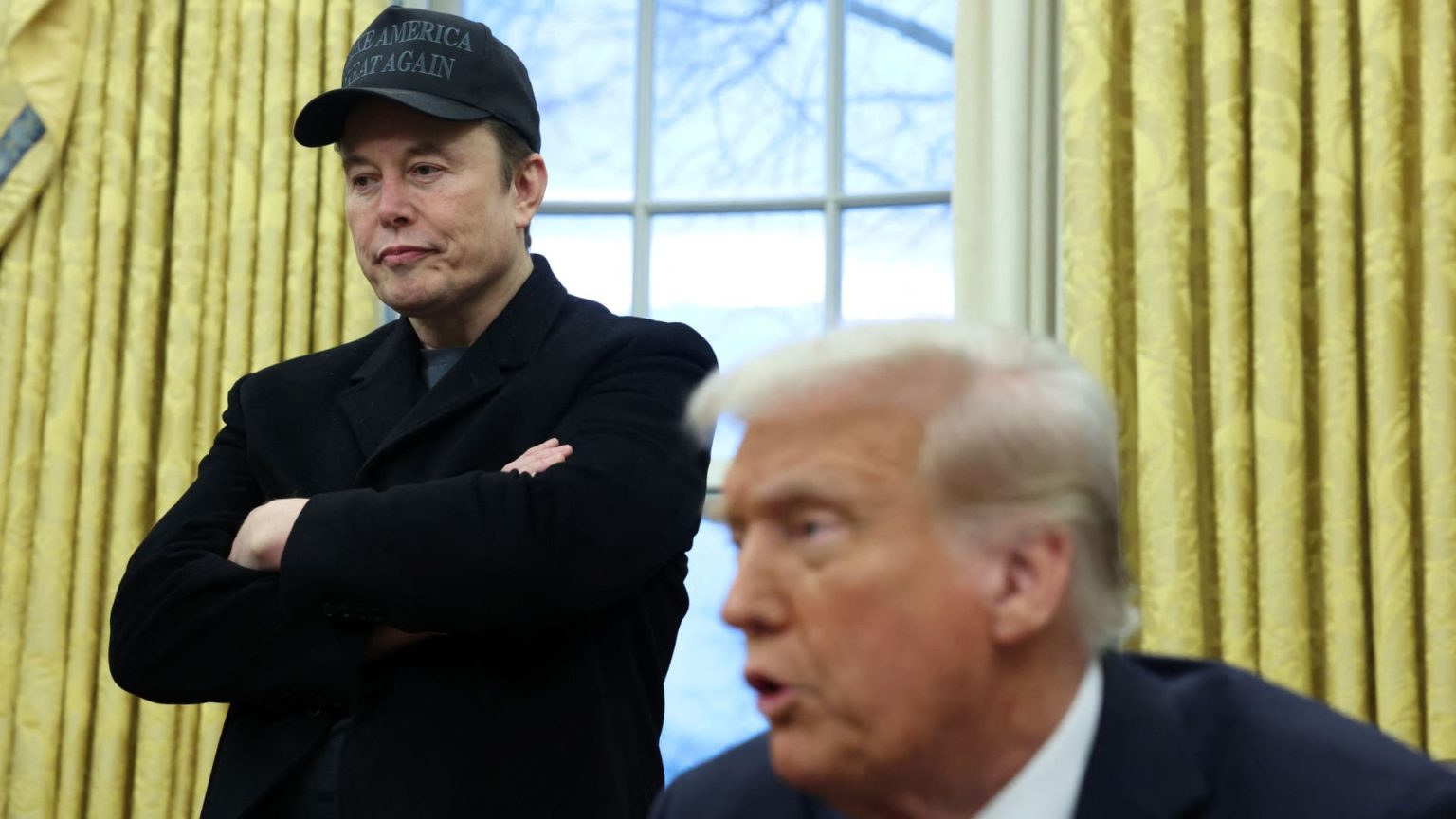In a recent assembly, President Donald Trump instructed his Cabinet secretaries to retain control over staffing decisions, distancing the administration from Elon Musk and his Department of Government Efficiency (DOGE). During a meeting on Thursday, Trump emphasized the importance of collaboration between department heads and DOGE, while reiterating that final job cuts would depend on the department leaders themselves. This directive marks a notable restriction of Musk’s influence in the federal reshaping process, which has seen significant reductions in workforce size amid controversy and heightened scrutiny.
| Article Subheadings |
|---|
| 1) Trump Limits Musk’s Role in Staffing Decisions |
| 2) Reaction from the Cabinet Regarding Workforce Cuts |
| 3) Overview of Recent Meeting Dynamics |
| 4) Legislative Concerns on Workforce Reductions |
| 5) Musk’s Engagement with Congressional Leaders |
Trump Limits Musk’s Role in Staffing Decisions
President Trump outlined during a Cabinet meeting that staffing decisions should rest with the individual department leaders rather than with Elon Musk and his administration’s efficiency drive. Although Musk’s Department of Government Efficiency has been tasked with major expenditure cuts and significant workforce reductions, Trump stressed that these decisions remain in the hands of those directly managing the departments. This statement signifies an important limitation on Musk’s previously broad mandate, suggesting that while efficiency is a key goal, it will not overrule the discretionary power of Cabinet members. Trump instructed secretaries to produce precise evaluations of their staff to determine who should remain and who should be let go, advocating for a meticulous approach rather than a sweeping strategy to staff reductions.
Reaction from the Cabinet Regarding Workforce Cuts
The working relationship between Musk and some Cabinet members has exhibited friction, particularly regarding Musk’s recent order demanding federal employees to justify their job roles or face job loss. Reports indicate several members of Trump’s Cabinet expressed frustration over this directive. Although this tension exists, Trump maintained a balance, complimenting Musk and DOGE after the meeting, describing their performance as “amazing.” The inconsistency in managing expectations between the Cabinet and Musk complicates the dynamics of workforce cuts and emphasizes the need for open communication to avoid potential discord. Trump’s insistence on allowing Cabinet members to retain necessary personnel conveys an awareness of concerns lingering within his team regarding the cuts orchestrated by the agency.
Overview of Recent Meeting Dynamics
The recent meeting highlighted the delicate framework under which these workforce cuts are being implemented. Trump characterized the discussions with his Cabinet as positive and productive, which may have set the tone for how efficiency reforms are regarded moving forward. Musk echoed this sentiment through social media, labeling the meeting “very productive.” His participation marks a continuation of his engagement in federal operations, reflecting his pivotal role in shaping the direction of government workforce efficiencies. However, it also indicates Musk’s strategies might remain controversial given the sometimes harsh realities faced by federal employees under his directives.
Legislative Concerns on Workforce Reductions
As the Trump administration moves forward to cut federal employment dramatically, concerns have arisen among congressional members. Many Republicans in Congress expressed their anxiety regarding the rapid pace of layoffs and shifted focus towards increasing transparency in the workings of DOGE. Lawmakers reported facing mounting pressure from constituents who are concerned about the impact of job losses in their districts. Republicans are particularly worried about how these cuts will affect their relevance in upcoming elections. The calls for clarity have intensified following Musk’s closed-door discussions with Senate Republicans, where he sought to address fears related to voter backlash.
Musk’s Engagement with Congressional Leaders
Adding to the ongoing narrative, Musk made his way to Capitol Hill, meeting with Republican senators to discuss the broader implications of workforce reductions under DOGE. These high-stakes discussions lasted nearly two hours and were organized to combat apprehension among senators and to clarify DOGE’s objectives in reducing spending. In these talks, Musk stressed the ongoing “opportunity to improve expenditures,” underlining that there exist methods to eliminate inefficiencies without compromising critical workforce requirements. Musk’s outreach to congressional leaders attempts to align policy directives with public and political sentiment, even as debates about efficiency versus job security continue to simmer in the political background.
| No. | Key Points |
|---|---|
| 1 | Trump has instructed his Cabinet to control staffing decisions, easing Musk’s influence. |
| 2 | Frustration exists among some Cabinet members regarding Musk’s heavy-handed approach. |
| 3 | The Cabinet meeting was characterized as positive, but tensions remain with DOGE’s strategies. |
| 4 | Republican lawmakers are concerned about job cuts affecting upcoming elections. |
| 5 | Musk’s closed-door meetings with Senators aimed to increase transparency and tackle concerns. |
Summary
The ongoing developments within the Trump administration regarding staffing decisions encapsulate a complex relationship between President Trump, Elon Musk, and the Cabinet secretaries. As drastic reductions in the federal workforce evoke concern among congressional members and the public, controlling the narrative around efficiency reforms becomes critical for maintaining political support. This intersection of policy and politics will likely continue to shape the administration’s approaches to workforce management, with both Trump and Musk navigating the challenges that come with such significant changes.
Frequently Asked Questions
Question: What is the Department of Government Efficiency (DOGE)?
The Department of Government Efficiency (DOGE) is an initiative designed to streamline government operations, aimed at reducing waste and improving efficiency across federal agencies.
Question: How have these staffing cuts affected public opinion?
The staffing cuts have led to increased anxiety among voters, with many expressing concerns about job security and the impacts on essential government services.
Question: What alternatives to staff cuts are being considered by the administration?
Instead of arbitrary cuts, the administration emphasizes evaluating efficiency and retention of key personnel as a means to meet spending reduction goals while ensuring that vital functions are maintained.


